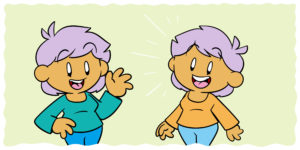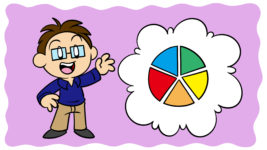When it comes to writing, it’s possible to improve your craft on every level, from the huge plot decisions that define your story to the exact words you use in any given sentence. One area in which you may never have considered enhancing your writing is the use of euphony and cacophony, but fear not; that’s exactly what we’re going to discuss in today’s article.
What are euphony and cacophony?
In the simplest possible terms, ‘euphony’ describes a harmonious mixing of sounds, while ‘cacophony’ describes a discordant mixing of sounds. Applied to writing, both terms can describe words, phrases, sentences, and even entire works.
Euphony and cacophony are most often applied to poetry, where their use alongside pace and rhythm can govern the overall feeling of a work. Despite this, euphony and cacophony are relevant to prose authors, and it’s worth asking what these relatively simple concepts can do for your writing.
Using euphony in your writing
It would be inaccurate to say that euphony deals solely with words that sound ‘good.’ Rather, the idea is that the syllables of a word or sentence run together smoothly, creating a harmonious reading experience.
Euphonious words tend to use long vowel sounds, as well as liquid and nasal consonants and semi-vowel sounds (so ‘l,’ ‘m,’ ‘n,’ ‘r,’ ‘y,’ ‘w,’ and sounds like ‘th’ and ‘wh.’) Words like ‘lull,’ ‘roomy,’ ‘exude,’ ‘demure,’ and ‘lovely’ are euphonious, and likewise a sentence such as, ‘Thumbing through slender volumes, she loathed the immodest Lilith.’
In poetry, an understanding of euphonious words and syllables is vitally important, since rhythm and tone make up so much of how a poem reads. In prose, the effect is generally more subtle, since less is riding on each individual word, but euphonious writing can still influence how the reader feels about words, passages, and even people and places.
For a quick example, consider a character who is a stocky, brutish alien warlord. Now, which of the following names seems to suit that character: Bloothe or Strakk? It may be a little cliché, but it’s almost a sure bet that you went for Strakk. Why? Well, Bloothe is a little too euphonious to feel ‘right’ for such a blocky, discordant character. In this way, euphonious and cacophonous phrases apply the quality of their sounds to the things they describe.
Sometimes, using euphony and cacophony is just about emphasizing how you want the reader to feel, but it can also help you control their perception of events. In The Time Machine, the protagonist encounters two races, the Eloi and the Morlocks. Initially, he assumes that the Eloi are the masters and the Morlocks are their servants. When presented alongside the smooth, luxuriant euphony of ‘Eloi’ and the spiky, uneven cacophony of ‘Morlocks,’ this assessment seems to fit, which just makes it more shocking when it turns out that the Eloi are closer to livestock than royalty.
On the flip side, a dangerous, unexpected, jarring moment communicated with euphonious language is less likely to feel genuine, and a calm, predictable, comfortable moment communicated with cacophonous language will likewise feel just a little bit wrong. Of course, you can work to subvert the reader’s instinctual reaction to the words you use, but even that is only possible once you understand what those reactions are likely to be.
The natural effects of euphony are heightened when used in conjunction with rhyme, deliberate rhythm, and the repetition of sounds in writing devices such as assonance, consonance, sibilance, and alliteration. For example, ‘My marvelous, mellow mists,’ is more euphonious because it uses alliteration to make the sentence even smoother and to subconsciously prepare the reader for what sounds they can assume are coming next.
If you’ve seen Shakespeare performed well, you’ll know that even in dramatic moments, his seemingly overwritten lines don’t drag. Part of this is down to his mastery of euphony, with the words flowing out in a gorgeous tumble of meaning.
And all our yesterdays have lighted fools
– William Shakespeare, Macbeth
The way to dusty death. Out, out, brief candle!
Life’s but a walking shadow, a poor player
That struts and frets his hour upon the stage
And then is heard no more.
When a sentence feels smooth and welcoming in this way, it creates a sense of comfort in the reader. This is great for scenes that you want to feel sensual, slow, or otherwise comfortable, and it can even help make an argument feel more convincing, but it can also work in the build-up to a surprise, relaxing the reader just so they can be shocked.
Using cacophony in your writing
If euphony is all about smooth, comfortable reading, cacophony is about stirring things up. Cacophony uses plosive sounds such as ‘k,’ ‘t,’ ‘g,’ ‘d,’ ‘p,’ and ‘b,’ as well as hissing ‘ch,’ ‘sh,’ and ‘s’ sounds to present harsh, discordant noises that grab the attention. Words like ‘bop,’ ‘cackle,’ ‘chimp,’ ‘grunt,’ and ‘pricked’ are cacophonous, and likewise a sentence such as, ‘I beat the Crab King and killed his pitiful pets.’
Just as euphony’s harmonious sounds aren’t ‘good,’ cacophonous sounds aren’t ‘bad.’ Instead, they break things up, forcing repeated emphasis or deliberate pauses in ways that can benefit your writing.
One, two! One, two! And through and through
– Lewis Carroll, ‘Jabberwocky’ from Through the Looking-Glass, and What Alice Found There
The vorpal blade went snicker-snack!
He left it dead, and with its head
He went galumphing back.
The extract above, from Carroll’s famous nonsense poem, uses cacophonous sounds to create meaning around new words. There’s no reason you should understand what, ‘The vorpal blade went snicker-snack!’ means, and yet you do, because context and cacophony tell you everything you need to know. Carroll commends himself for this in Through the Looking-Glass, having Alice observe that, ‘Somehow it seems to fill my head with ideas – only I don’t exactly know what they are! However, somebody killed something: that’s clear, at any rate.’
Where euphony makes readers comfortable, cacophony keeps them on their toes, breaking up sentences with staccato sounds. Tony Burgess’ bizarre Pontypool Changes Everything begins with an increasingly figurative passage about horses. Literal meaning eventually falls by the wayside, but the frosty, crackling cacophony of Burgess’ writing maintains a clear, and increasingly disturbing, tone.
Down in the strange hooves of Pontypool’s tanning horses scratches one of Ontario’s thinnest winds. Cold as a needle and far too complicated to ever leave the ground, these picks of air snap at fetlocks, blackening the legs of horses.
– Tony Burgess, Pontypool Changes Everything
That’s the effect of a cacophonous sentence, but even cacophonous words and syllables can be effective. Cacophony offers an experience of sudden discord, which pairs perfectly with a sudden, discordant experience. There’s a reason, after all, that the famous word-balloon sound effects from the 1960s Batman TV series are a library of cacophonous sounds: Biff! Pow! Zap! Sock! Sudden, cacophonous sounds are the aural equivalent of a punch on the chin.
Because of this, cacophonous sounds can be the ideal punctuation for important moments, whether dramatic or comedic. It’s partly because of this that ‘funny’ words tend to be cacophonous, with a blunt, impactful plosive sound punctuating the moment of comedic realization (something we covered in Everything You Need To Know About Funny Words).
If you’re writing an urgent, dangerous moment, or really any passage where you don’t want the reader getting too comfortable, it’s worth taking a look at whether you could introduce more cacophonous sounds to intensify the intended effect. The same is true of names (whether of people or places) as well as the words you use in description. Much of this will be natural, since we already tend to use euphonious and cacophonous sounds according to the things they describe, but there will be occasions where understanding euphony or cacophony will help you find the best form of a phrase, sentence, chapter, or even title. The Great Gatsby is a much more memorable title than Under the Red, White and Blue, and part of that is due to the sharp, contained, cacophonous nature of the phrase. Likewise, it’s no coincidence that lullabies tend to be packed with euphonious sounds that don’t disturb you as you drift off to sleep. These sounds have an immediate, often powerful effect on us, and that’s something writers can harness if they put in the work.
Getting comfortable with euphony and cacophony
Euphony and cacophony aren’t grand tools; they’re ways of thinking about sounds, and while those sounds can be gathered together to intensify a reader’s reaction, they’re relatively gentle on their own. Don’t think of euphonious and cacophonous sounds as landmines waiting in your writing, but as gentle eddies in the wind that can help you keep your kite in the air. Chain enough of them together and you can climb higher and higher, achieving something genuinely impressive, but it’s also possible to just hit a few, pull off a twirl or dip, and congratulate yourself on doing more than just holding onto the string.
Mastery of euphony and cacophony depends on insight. The more you look for moments that would be enhanced by how a passage sounds – the more you ask how sound interacts with meaning – the more you’ll get out of these devices. Happily, they’ve got a lot to give.
How do you use euphony and cacophony in your own writing? What are some of your favorite examples of each from prose and poetry? Let me know in the comments, and check out The Definitive Guide To Naming Your Characters for more on how we derive meaning from terminology and How To Swear Really &£$%^$ Well for insight into a particular group of cacophonous words.





